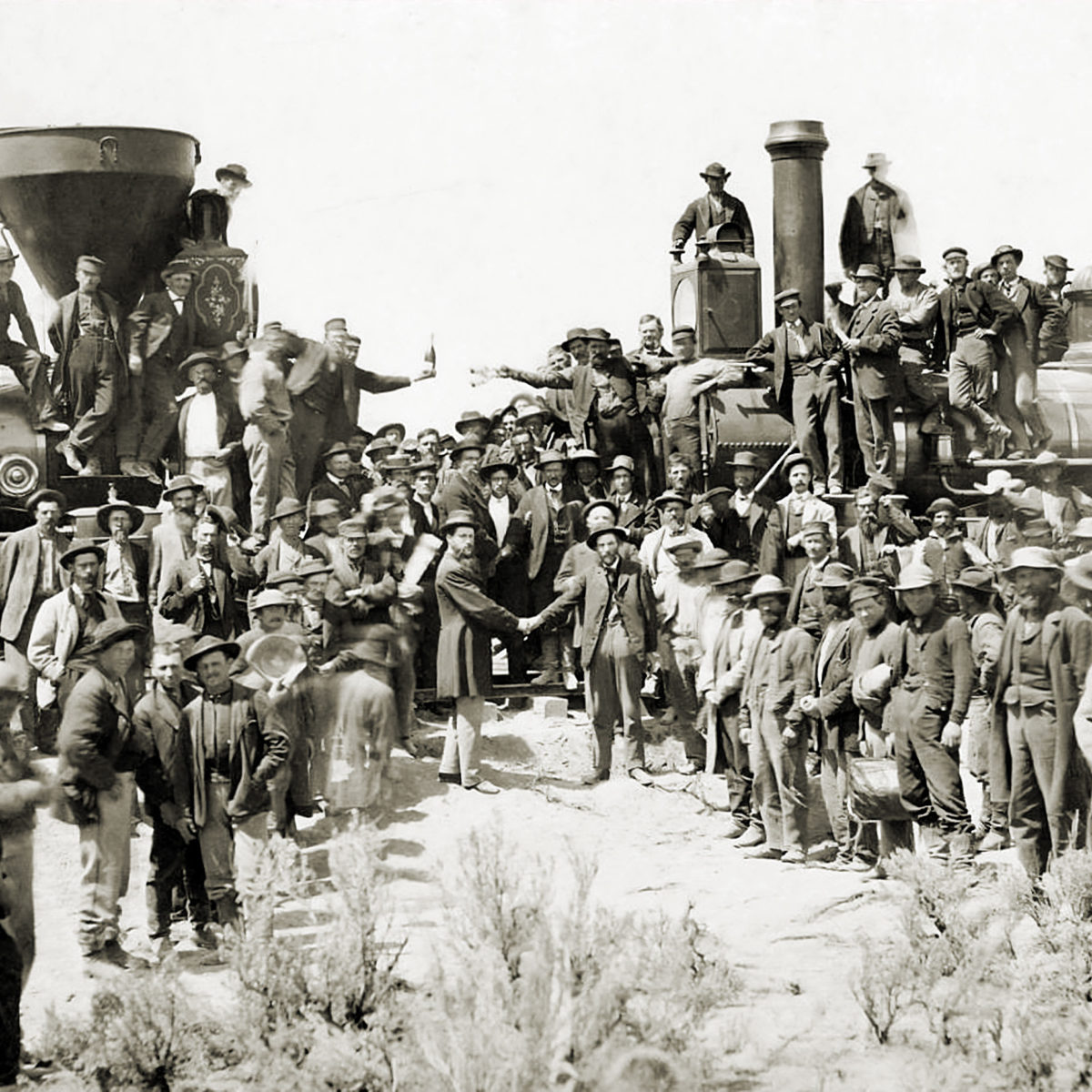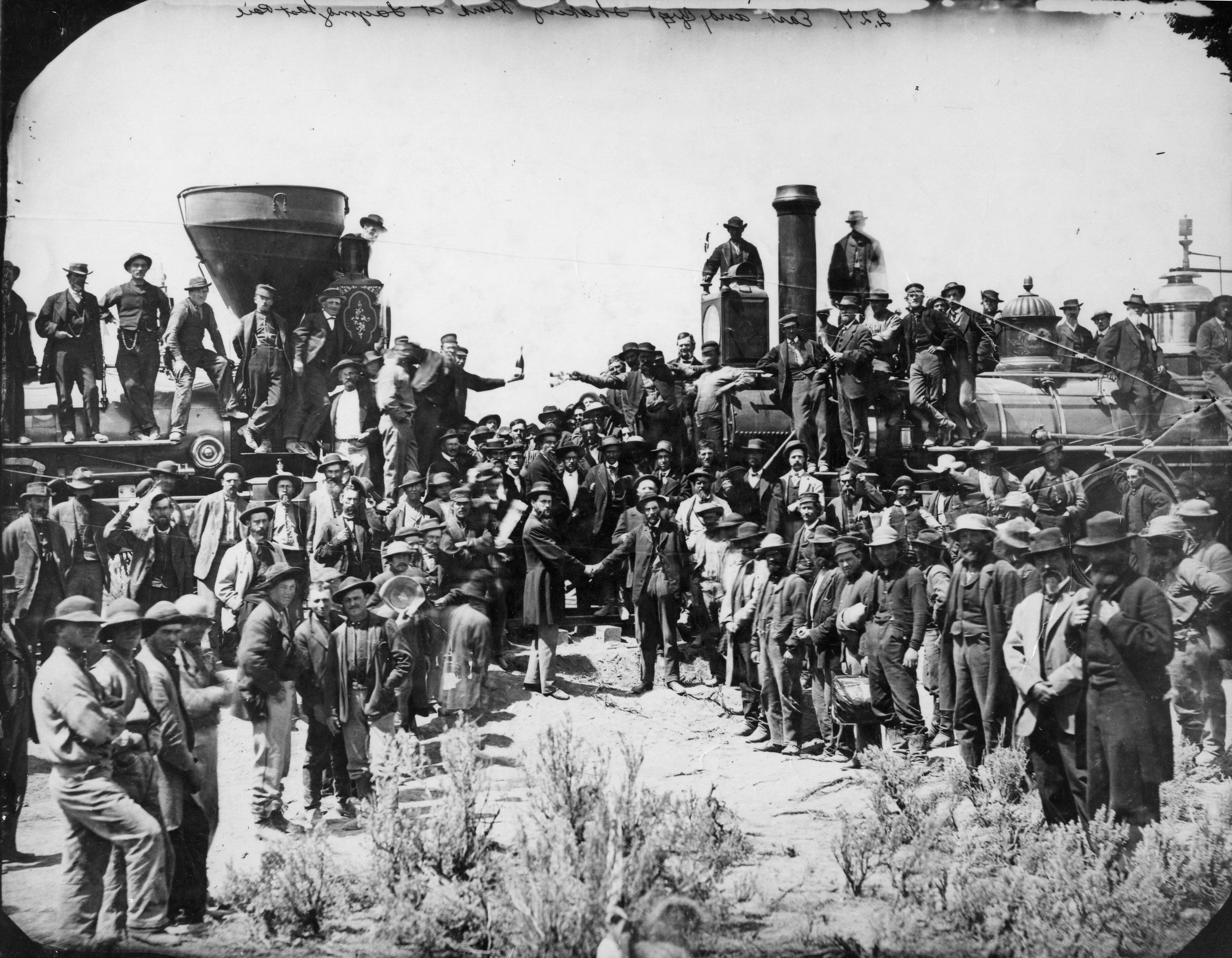The First Transcontinental Railroad was built crossing the western half of America and it was pieced together between 1863 and 1869. It was 1,776 miles long and served for the Atlantic and Pacific coasts of the United States to be connected by rail for the first time in history. The Transcontinental Railroad was also known as the Pacific Railroad for a while and later on as the Overland Route — after the main passenger transport service that operated the line.
The idea of building such a line was present in America for decades before the construction was authorized by the Pacific Railroad Acts of 1862 and 1864. This was the time of the American Civil War and the southern Democrats who opposed the idea before were now absent from Congress so the Republicans used the opportunity to vote the construction of the transcontinental railroad without them.
They chose two independent companies, the Union Pacific Railroad and Central Pacific Railroad and supported the project by issuing US government bonds. The land through which the railroad was supposed to pass was mainly worthless desert, although some portions of good farming land had to be crossed as well. The workers involved in the building operations were mainly army veterans from the Civil War and immigrants from Ireland. Engineers and supervisors were mostly Union Army veterans, experienced in operating and maintaining trains during the Civil War.
The Transcontinental Railroad was finished and opened for traffic on May 10, 1869. The transcontinental transportation network revolutionized the American economy because the transport of goods was made much faster, cheaper and more flexible.
More Stories About Railroads

How Railroads Took the ‘Wild’ out of the West
American novelist Marcia Davenport wanted to discover for herself the Wild West. The problem was that her quest for that West took place only in 1932,…
Tracking the History of Mile-High Railroads
Ridgway, Colorado, was the birthplace of the Rio Grande Southern, and the Ridgway Railroad Museum celebrates that fact.
The Civil War’s Most Interesting General
He was Lincoln, Grant and Sherman’s go-to man — but you’ve probably never heard of him.
How the Civil War Inspired the Commodities Market
The effort to keep the Union Army fighting helped create the modern U.S. marketplace for buying, selling and speculating on goods.
Ghost Towns: Cuervo, New Mexico
Born when the railroad arrived in 1901, this abandoned village remains on the beaten track — on Route 66 in plain view of I-40.
‘From the River to the Sea’ Book Review
John Sedgwick describes the race between railroad barons of the American West to reach the Pacific Coast with tracks

